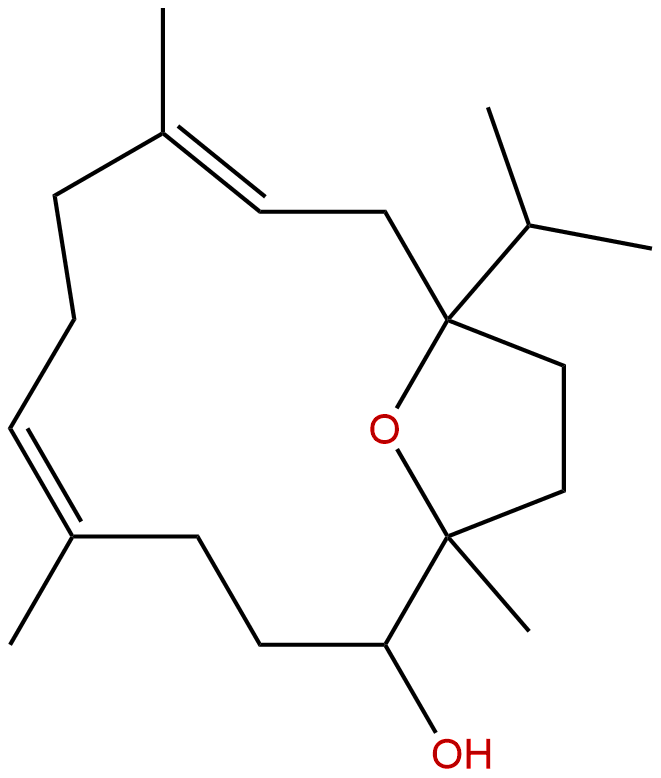
IncensoleCAS No.:22419-74-5
|
||||||||||
 |
|
|
||||||||

| Catalogue No.: | BP1716 |
| Formula: | C20H34O2 |
| Mol Weight: | 306.49 |
Product name: Incensole
Synonym name:
Catalogue No.: BP1716
Cas No.: 22419-74-5
Formula: C20H34O2
Mol Weight: 306.49
Botanical Source: Boswellia carteri and Boswellia serrata (Indian olibanum)
Physical Description: Oil
Type of Compound:
Purity: 95%~99%
Analysis Method: HPLC-DAD or/and HPLC-ELSD
Identification Method: Mass, NMR
Packing: Brown vial or HDPE plastic bottle
The product could be supplied from milligrams to grams. Inquire for bulk scale.
We provide solution to improve the water-solubility of compounds, thereby facilitating the variety of activity tests and clinic uses.
For Reference Standard and R&D, Not for Human Use Directly.
Description:
Incensole has a protective or stimulating effect on β-cells of the rat pancreas, it also can increase the insulin secretion, which evidenced by a significant increase both in body weight and in liver glycogen.
References:
Planta Med 2015; 81 - PB3
Hypoglycemic and hypolipidemic activities of incensole from Olibanum on streptozotocin diabetic rats[Reference: WebLink]
Incensole is a macrocyclic diterpene with a wide spectrum of bioactivities. It was isolated from the oleogum resin of Boswellia carterii Birdwood.
METHODS AND RESULTS:
This study discusses for the first time the potential hypoglycemic and hypolipidemic effects of Incensole on diabetic rats. Biochemical and histochemical studies completed and confirmed our findings. Diabetes was induced in rats by streptozotocin (STZ, 40 mg/kg), which is a selective β-cells destructor. Incensole was administered daily to diabetic rats at 5 and 10 mg/kg for thirty days. Several parameters were measured including body weight, blood glucose level, lipid profile and plasma enzymes (SGPT, SGOT and ALP). All studies were performed in comparison with the standard drug "Glibenclamide". Results showed that Incensole is effective in lowering the blood-glucose level in the experimental rat model (201.7 ± 9.236) compared to the disease control group (588.8 ± 11.43).
CONCLUSIONS:
Biochemical and histopathological studies proved that Incensole has a protective or stimulating effect on β-cells of the rat pancreas. It also increased the insulin secretion; evidenced by a significant increase both in body weight and in liver glycogen.